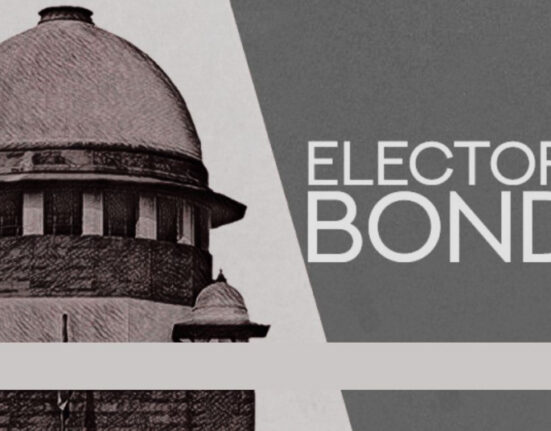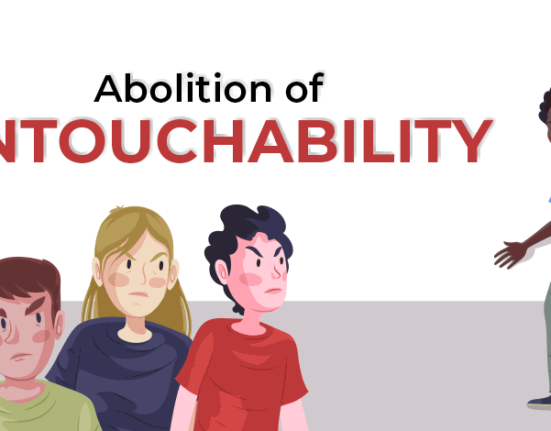Harsh Singh Rajput, a 1st Year student from Galgotia University has written this Article on “PIL: Around the Country, A better understanding of PIL in India”.
Historical background:
As rightly said by Martin Luther King, Jr.
“Injustice anywhere is a threat to justice everywhere”
Public interest litigation was introduced due to the need for equal representation of people who were devoid of all the facilities in the court of law as they belong to poor, uneducated, unrepresented, discriminated groups of the society. Decades ago, it was difficult for the poor section of society to reach the court. Only the wealthy section of society was entering in court.
The concept of PIL can be traced back to Roman times. It was first officially introduced in the legislation of the USA, which further developed this concept around the 1950s. During that time there were various movements by the unrepresented section in the country. Such movements in that country contributed to public interest law, which is a part of the legal aid movement. The first legal aid office was established in New York in 1876. In the 1960s, the PIL movement began to receive financial support from the Office of economic opportunity.
Concept of PIL in India
In India, before the 1960s costly procedures and complicated procedure makes it difficult for a average person to move to higher courts for the enforcement of fundamental rights. The uneducated, underprivileged find themselves in a weak position when it comes to going to court against atrocities they were suffering from. Before the concept of PIL was introduced in India it was difficult to introduce such wide issues before the court. Especially the issues which involves public interest or common interest at a large scale whether it was for a community or a group of individuals.
The very concept of PIL was introduced in India by Justice Krishna Iyer in the case of Mumbai Kamgar Sabha vs Abdul Bhai[1] in 1976. And the first case which is being reported as a PIL case was Khatoon vs the State of Bihar[2] in 1979, where this case highlighted the suffering of prisoners in the jails of Bihar. As a result of this PIL,
40,000 prisoners were released signifying the importance of basic fundamental rights i.e the right to speedy trials.
The PIL proclamation throughout the country was done through the case of S.P Gupta vs. Union of India[3]. And Justice P.N Bhagwati was handling this case. It was held in this case that “any member of the public or social action group acting bonafide” can invoke the Writ Jurisdiction of the High Courts or the Supreme Court seeking redressal against violation of legal or constitutional rights of persons who due to social or economic or any other disability cannot approach the Court. And this judgment highlighted the importance of PIL in the enforcement of “Public duties”.
Defination
Public interest litigation simply refers to litigation filed in a court for the protection of rights, duties, or interests of the Public or an individual. Any matter where the interest of the public at large is affected can be redressed by filing a PIL. It should be noted that PIL will work according to the interpretation of judges after considering the intention of the public at large. That is why it is not defined in any of the statue or an act. The person filing the petition must prove to the satisfaction of the court that the petition is being filed for the public interest and not just as a frivolous litigation by a busybody.
The court can itself take cognizance of the matter and proceed suo motu. Moreover, cases can also commence on the petition of any public-spirited individual. Some of the matters which are entertained under PIL are:
- Fortified Labor matters.
- Disregarded Children.
- Upkeep of legacy and culture.
- Monstrosities on ladies.
- Environmental pollution and disturbance of ecological balance
- Food corruption
- Non-installment of least wages to labourers and misuses of easygoing specialist.
Procedure to file a PIL:
First of all, who can file a PIL?
In PIL, the victim doesn’t need to approach the court whose rights are being infringed. Anyone can file a PIL. It can be an individual, group of citizens, public, private, or non-governmental organization. But it should contain the public interest otherwise it will not be considered. Even, the Hon’ble court can take the sun Moto cognizance if the matter is of utmost significance.
It can be filed under Article 226 in the High Court and under Article 32 in the Supreme Court. Also under the Section 133 of the Criminal Procedure Code in the magistrate court.
While filling, there should be 5 copies of the PIL. The copy of the PIL will be served to the respondents only when the court will issue a notice. And while filling it in High Court, we have to submit two copies. One for the respondents and that copy for the respondent should be served in advance.
Before filling PIL, there are certain things to keep in mind:
- While filling a PIL in High Court, address it to the Chief Justice of that particular High Court.
- While filling a PIL in Supreme Court, address it to the Chief Justice of India.
- Also, while filling a PIL in High Court we’ve to submit two copies and one to respondents in advance.
- And in Supreme Court, file 5 copies, and the copy of the PIL will be served to the respondents only when the court will issue a notice regarding the same.
- All the documents should be submitted properly.
- In PIL, the petitioner should mention the petitioner’s name, postal and email address, occupation, PAN number, phone number, and annual income
Filling a PIL is not expensive. Petitioner just has to pay a court fee of Rs.50 for each respondent. The cost incurred to fight the case varies from advocate to advocate. A PIL can be filed for violation of human rights, and fundamental rights. However it cannot be filed for matters related to services, salary, landlord-tenant matters, etc.
How has PIL affected the judicial structure of India?
The concept of PIL improves the judicial structure of India in many ways,
1). It put a restriction on the barbarian nature of administrative organs. As in the case of Anil Yadav vs. the State of Bihar[4] in 1981 where 33 suspected criminals were blinded by the police in Bhagalpur jail in Bihar by putting acid into their eyes. The Supreme Court directed the Bihar government to bring the blinded persons to Delhi for medical treatment at the state’s expense. In this case, the Court declared free legal aid as a fundamental right as an aspect of the Article 21.
The human rights of prisoners subject to torture, victims of police excesses, inmates of protective homes and mental asylums, bonded and child labor, victims of sexual harassment and earthquake victims, and many others have been protected by the Supreme Court. In the case of Citizen for Democracy vs. the State of Assam[5], the Supreme Court declared that handcuffs and other fetters shall not be forced upon a prisoner while lodged in jail or while in transport or transit from one jail to another or the court or back.
Case Laws
2). It highlighted the fact that a private interest case can also be traced as a public interest case in the case of the Indian Banks’ Association, Bombay & Ors. vs. M/s Devkala Consultancy Service and Ors[6].
3). In Guruvayur Devaswom Managing Committee And Anr. vs. C.K. Rajan and Ors. [7], the Supreme Court held:-
Public Interest Litigation is meant for the enforcement of fundamental and other legal rights of the people who are poor, weak, ignorant of the legal redressal system, or otherwise in a disadvantageous position, due to their social or economic background. Such litigation can be initiated only for redressal of a public injury, enforcement of a public duty, or vindicating interest of public nature. It is necessary that the petition is not filed for personal gain or private motive or other extraneous consideration. It should be filed as bona fide in the public interest.
4). In Sunil Batra v. Delhi Administration & Others[8], the Court ruled that the Right to Life includes the right to live with dignity. Life, it said was not just mere animal existence. And it departed from the traditional rule of standing by authorizing community litigation.
5). In M.C. Mehta v. State of Tamil Nadu & Others, the court take excessive steps towards child labor. The court observed that it is possible to identify child labor in the organized sector, which forms a minuscule of the total child labor, the problem relates mainly to the unorganized sector where utmost attention needs to be paid. 6). In Vishaka & Ors. v. State of Rajasthan & Ors.[9], the Court gave directions regarding the enforcement of the fundamental rights of working women under Articles 14, 19, and 21. The Court gave comprehensive guidelines and norms and directed for protection and enforcement of these rights of the women at their workplaces.
Types of PIL in India:
There are twotypes of Public Interest Litigation (PIL):
- Representative Social Action and
- Citizen Social Action
Representative Social Action is a form of PIL whereby any member of the public can seek judicial redressal for a legal wrong caused to a person or a determinate class of persons who because of poverty, or socially and economically disadvantaged position, is unable to approach the court. There are many cases under this type of PIL including Hussainara Khatoon & Ors vs State Of Bihar, 1979, Sunil Batra vs Delhi Administration, 1979, and many more.
While the Citizen Social Action category represents a shift from the traditional view of the courts being a forum to enforce individual rights. The aim of this category of PIL is not to improve access to justice for the weaker section unlike a Representative Social Action, but to vindicate rights that are diffused among the public to be enforced, though no traditional individual right exists. The Supreme Court in S.P. Gupta Vs Union of India, (1982) held that any member of the public with sufficient interest could assert ‘a diffuse, collective and meta-individual right’.
Comparing the PIL of India with that of others:
United States Of America
The model that is evolved in America is not suitable for India as our country is developing. Thus, viewed as a reform of the traditional model. PIL in India can be seen as an improvement of the American model of PIL.
Indian PIL system is more oriented towards giving equal and fair access to the unrepresented and poor section of society. Whereas the American PIL system is more oriented towards providing funds so that people can participate. Also, the continuing judicial willingness to depart from the fundamental principles of the traditional Anglo-American legal system that plaintiffs must have a personal stake, that judges are passive arbiters of facts produced by parties, and that remedies must be derived from rights when confronted with social and political injustice.
Thus, the public interest litigation model in India cannot be based on the U.S.A. model because of large-scale poverty and ignorance, and the lack of adequate resources. The model of PIL that has evolved in the U.S.A. has distinctive characteristics peculiar to its social context and environment. However, PIL in India can be seen as an improvement on the American doctrine of standing which has muddled together two distinct issues; (i) whether the petitioner is sufficiently motivated to present a good case to the court and (ii) whether there is an injury that requires judicial redress1[10].
American law assumes that only a person with a personal stake can meet the first requirement of motivation. The Indian Supreme Court has rejected this presumption by allowing any member of the public to seek judicial redress for a legal wrong caused to “a person or to a determinate class or persons who, because of poverty, helplessness or disability or socially or economically disadvantaged position is unable to approach the Court directly.”
Germany
It has more comprehensive legislation in the PIL system. The relevant provisions of PIL are included in the Constitution of Germany, the Administrative Procedure Law, Civil Procedure Act, and the Anti-Unfair Competition Law. The following focuses on an analysis of the PIL system of Germany from the view of the subject filing PIL. In Germany, PIL is confined to alleged violations of the federal natural protection act and associated provisions. Only associations officially recognized by the environmental authorities are eligible to initiate a PIL[11].
Tanzania
Tanzania has a similar concept of PIL as that we’ve in India. Proceedings may be instituted by any public-spirited individual to challenge either the legality of public decisions or actions or the consistency of legislation with the Constitution. In public interest matters, the Attorney General is made the Respondent on behalf of the Government, its organs, or civil servants[12].
Loopholes of PIL
There is always the possibility that the instrument of PIL may be misused by a person purportedly litigating in the public interest. Besides, considering the nature of the cases involved, the orders of the court are not easily enforceable. They requires the petitioners to approach the court again for subsequent direction.
Many people started handling PIL as a tool for harassment because frivolous cases can be filed without heavy court fees as compared to private litigations. Due to the flexibility of character of the PIL, the opposite party gets an opportunity to ascertain the precise allegation and respond to specific issues. PIL is being misused by the public agitating for private grievances in the grab of public interest by seeking publicity rather than supporting the public cause.
Conclusion
Public Interest Litigants, in our country, is still in their developing stage. Nowadays, PIL is being used as an instrument to do the political stunt. PIL is being used to create a misbalance in society rather than being used for the public interest. But as far as the judiciary is concerned it will not tolerate any frivolous PIL. It also fines the party instituting PIL if it is found to be frivolous. So far, PIL is being quite a marvelous step by our judiciary against the atrocities of poor and unrepresented sections of our society. Hence, the procedure of Public Interest Litigation is under developing state. It is being reconstructed so that the people with good intentions will get justice and people who abuse it got penalize and punished.
Also Read: What are the five types of Writ Petition?, Click Here!
[1] (1976) 3 SCC 832
[2] (1980) 1 SCC 98
[3] AIR 1982 SC 149
[4] 1982 AIR 1008, 1982 SCR (3) 533
[5] 1995 (3) SCR 943
[6] (2004) INSC 287
[7] (2003) 7 SCC 546
[8] (1978) 4 SCC 409
[9] (1997) 6 SCC 241
[10] Zhang Wanhong & Ding Peng, “Public Interest Litigation and the Development of Human Rights” 2009. Available at http://www.china.org.cn/china/human_rights/ 2009-10/29 /content_18792628.htm, visited September 30th, 2013.
[11] https://www.environmental-mainstreaming.org//
[12] Ibid
![]()







Leave feedback about this